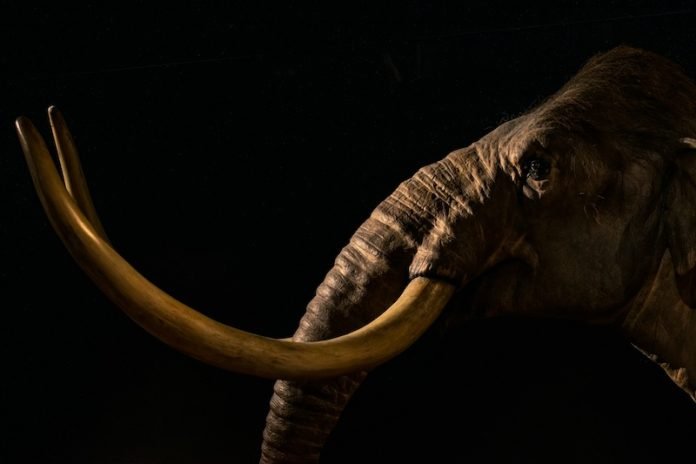
Once upon a time, about 14,000 years ago, a woolly mammoth named Elma wandered through the lands that we now call Alaska and northwestern Canada.
This mammoth wasn’t just any mammoth; her story has recently helped us understand how the earliest humans who came to Alaska lived and interacted with these giant creatures.
Elma’s tale begins with her tusk, found at a place called Swan Point in Interior Alaska.
This place is very special because it’s one of the oldest spots where people decided to set up camp in Alaska. Scientists got really excited about Elma’s tusk because it held secrets about her life and the journeys she took.
To unlock these secrets, researchers did something called isotope analysis. It sounds complicated, but it’s just a way of looking at certain elements in the tusk to figure out where Elma traveled and what she ate.
This method is like reading a diary that Elma left behind, written in the language of chemistry.
Elma’s travels were quite impressive. She roamed over 1,000 kilometers, a huge distance, especially for a mammoth! What’s even more fascinating is where she chose to travel.
It turns out, Elma liked to hang out in places where, thousands of years later, archaeologists found evidence of human camps.
This discovery made scientists think that the first people in Alaska knew where to find mammoths and set up their homes in these areas on purpose.
The people and mammoths shared the land, and it seems like the mammoths were a big reason why people decided to stay in certain spots.
Imagine setting up a camp where you knew there would be food walking by. That’s what the early humans did, following mammoths like Elma.
Elma’s story is particularly special because it connects her life with that of the humans living at the same time.
Pieces of her tusk, along with the remains of two young mammoths and signs of human life like campfires, stone tools, and remains of other animals, paint a vivid picture of life back then.
The scientists studying Elma’s tusk found out she was a healthy 20-year-old female in her prime.
They could tell she was well-fed and lived in the same area where humans set up a seasonal hunting camp. Sadly, it seems Elma died around the same time this camp was active.
Elma lived during a time of big changes. The world was getting warmer, and the open grasslands she loved were turning into forests. This change made life harder for mammoths, making it easier for humans to hunt them.
Through Elma’s journey, we learn not just about mammoths but also about the early humans who lived alongside them. Her story is a bridge to our past, showing us how the environment, animals, and humans have always been connected.
As we piece together these connections, we gain a deeper understanding of how our ancestors lived and survived in a world so different from our own.
The research findings can be found in Science Advances.
Copyright © 2024 Knowridge Science Report. All rights reserved.



